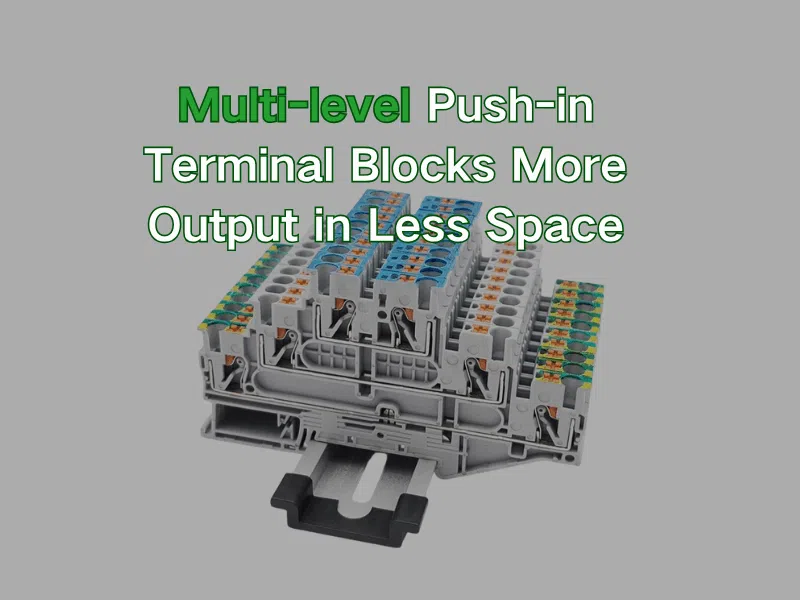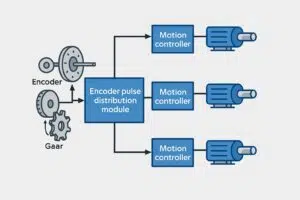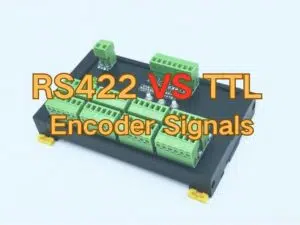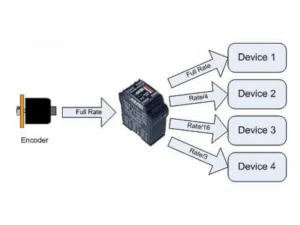Multi-level push-in terminal blocks optimize wiring efficiency by stacking multiple levels of terminal points in one compact unit, offering more connections within a smaller footprint — ideal for space-constrained electrical panels and complex automation systems.
What Are Multi-level Terminal Blocks?
A multi-level terminal block features two or more stacked connection levels within one housing, mounted on a single DIN rail. Each level operates independently, enabling multiple circuits to share the same vertical space — a key advantage for engineers designing high-density panels.
For example, a 2-tier terminal may handle signal and neutral wiring on separate levels, while a 3-tier model can integrate signal, neutral, and protective earth (PE) connections in a single, compact unit.
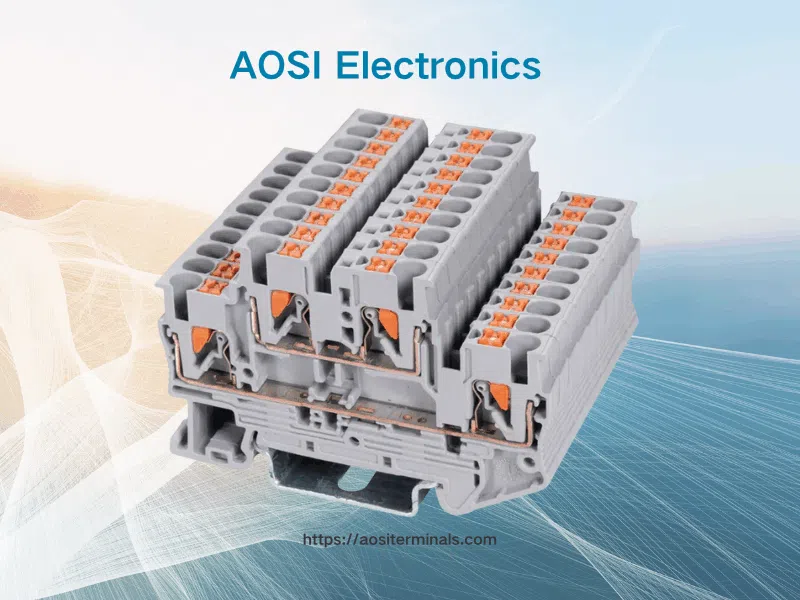
Key components include:
- Push-in spring clamp for each level
- Common current bar
- Individual marking zones and test points
- Modular bridging and jumpers for easy potential distribution
2-Tier and 3-Tier Design Explained
- 2-Tier Terminal Blocks: Two sets of terminals stacked vertically, allowing two separate circuits to be managed in one block.
- 3-Tier Terminal Blocks: Three vertically stacked terminals, further increasing circuit density without additional panel space.
| Design Type | Number of Circuits | Typical Application |
| 2-tier | 2 | PLC input/output circuits |
| 3-tier | 3 | Multi-signal or sensor distribution |
| 3-tier with PE | 3 + ground | High-density automation wiring |
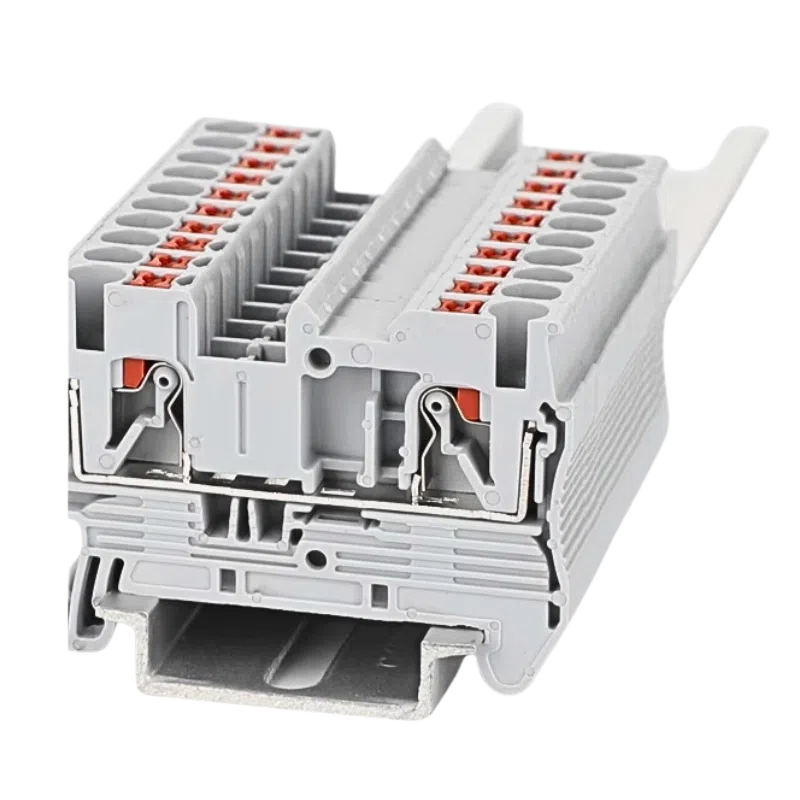
AOSI Multi-level Push-in Terminal Block Series
- Stacked design for high-density PLC wiring. Available in 2-tier and 3-tier models, UL & VDE certified, ideal for compact control cabinets and automation systems.
Advantages of Multi-level Structure
- Space Saving Design
By stacking circuits vertically, multi-level terminals double or triple the wiring capacity per DIN rail. This makes them essential for compact control cabinets, distributed I/O systems, and modular PLC enclosures. - Logical Signal Grouping
Each level can handle different functions — such as input, output, and ground — which simplifies maintenance and improves troubleshooting clarity. - Faster Installation
The push-in spring clamp mechanism allows direct insertion of solid or ferruled wires, reducing wiring time by up to 70% compared with screw-type terminals. - Maintenance-Free and Reliable
The spring maintains constant contact pressure, preventing loosening under vibration or thermal expansion, making it ideal for long-term industrial use. - Clean Aesthetic and Easy Labeling
Multi-level blocks feature marking zones and test points on every tier, helping electricians maintain clear documentation and signal traceability.
Typical Use Cases
Multi-level push-in terminal blocks are designed for compact control panel wiring solutions where efficiency and organization are priorities.
Common applications include:
- PLC signal inputs: High-density signal distribution in tight control cabinets.
- Multi-circuit branching: Power or signal splitting within automation interfaces.
- IoT and sensor networks: Dense wiring of multiple sensor lines.
- Control systems with complex wiring: Streamlining multiple loops with fewer blocks.
Their modular construction also allows easy bridging across levels, enabling simplified potential distribution between multiple terminals.
Product Series Overview
AOSI offers a complete range of multi-level push-in terminal blocks designed for compact control cabinet wiring. These models combine layered connection design with UL and VDE-certified push-in spring technology, enabling engineers to achieve higher wiring density without compromising safety or performance.
Each model supports standard DIN 35 mm mounting, plug-in bridges, and test adapters — ensuring full compatibility with the entire AOSI terminal block ecosystem.
| 모델 | Number of Levels | 피치(mm) | Rated Current (A) | Wire Range (mm²) |
| PTTB1.5 | 2-tier | 3.5 | 17.5 | 0.2 – 1.5 |
| PTTB2.5 | 2-tier | 5.2 | 24 | 0.2 – 2.5 |
| PTTB4 | 2-tier | 6.2 | 32 | 0.2 – 4.0 |
| PT2.5-3L | 3-tier | 5.2 | 24 | 0.2 – 2.5 |
🔗 Explore the complete AOSI Multi-level Push-in Terminal Block Series for detailed datasheets, drawings, and downloadable 3D models.
FAQs – Multi-level Push-in Terminal Blocks
A1: A 3-tier terminal block integrates three connection levels in one housing, enabling up to three independent circuits on a single DIN rail slot. This saves panel space and simplifies multi-signal wiring in automation systems.
A2: Use multi-level terminals when you need to increase wiring density or logically group signals (e.g., I/O wiring in PLCs). They are ideal for space-constrained cabinets or when running multiple signal lines in parallel.
A3: Most 2-tier and 3-tier models accept 0.5–2.5 mm² wires (AWG 20–14). Larger versions, such as PT4 series, handle up to 4 mm² conductors for higher current circuits.
A4: Yes. Multi-level terminals share the same DIN 35 rail mounting dimensions and can be combined with single-level models for mixed layouts.
결론
Multi-level push-in terminal blocks represent the next evolution of compact wiring technology. By integrating 2-tier and 3-tier structures, they enable engineers to maximize rail usage while keeping the layout neat and maintainable.
For engineers seeking more output in less space, the AOSI multi-level series delivers certified reliability, flexibility, and efficient wiring performance for any industrial automation project.

